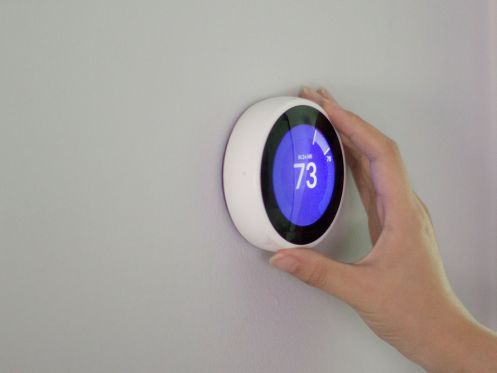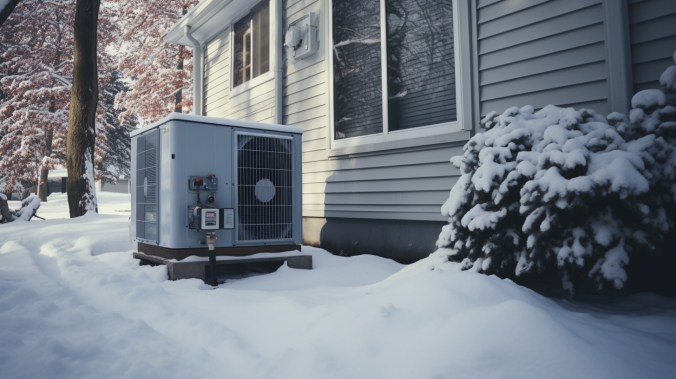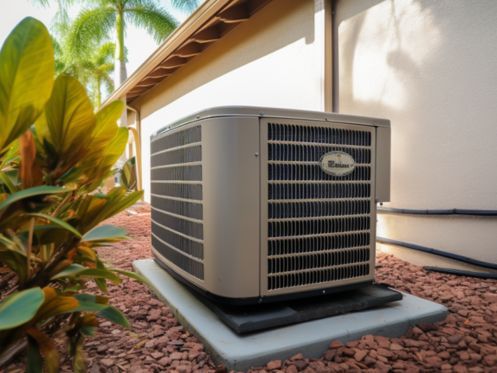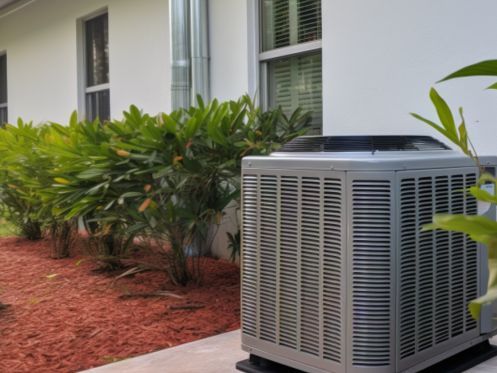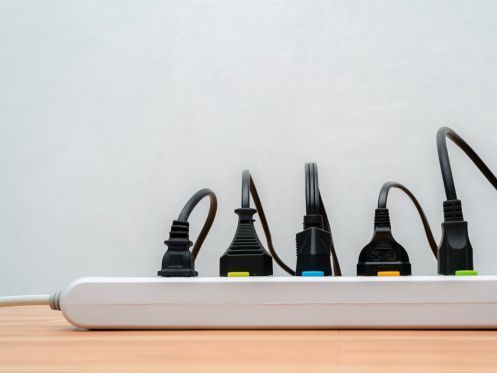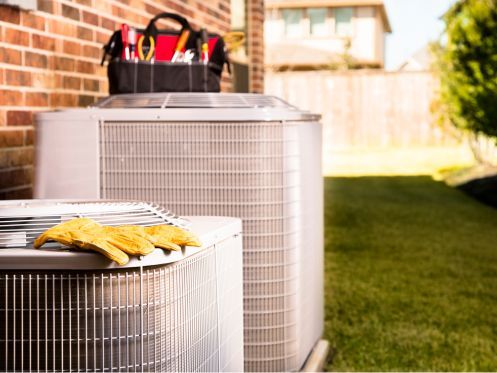The Benefits of Smart Thermostats
Table of Contents
Welcome to the world of smart living! In today’s rapidly evolving world, where technology is seamlessly integrated into every aspect of our lives, it’s no surprise that even our thermostats have become smarter. Smart thermostats have risen to prominence in recent years, offering a range of benefits that extend far beyond the realm of simple temperature control. When Smart Thermostats are installed correctly by experienced professionals, they bring many benefits to your home. These innovative devices have revolutionized the way we interact with our home environments, providing us with enhanced comfort, energy efficiency, and connectivity like never before.
In this blog post, we dive into the innovative realm of smart thermostats, a game-changing technology that’s transforming how we manage our home environments. Smart thermostats offer a blend of convenience, energy efficiency, and intelligent home integration that traditional models simply can’t match.
As our homes become more connected, smart thermostats stand at the forefront of this revolution. They’re not just about controlling temperature; they learn from your habits, adapt to your lifestyle, and even help you save money on your energy bills. Whether you’re tech-savvy or just starting to explore smart home technologies, understanding the benefits of smart thermostats is key to modernizing your living space.
Energy Efficiency and Cost Savings With Smart Thermostats
One of the most compelling advantages of smart thermostats is their ability to significantly improve energy efficiency, leading to notable cost savings on utility bills. Here’s how they achieve this:
- Learning Your Schedule: Smart thermostats learn your daily schedule and temperature preferences. This learning ability enables them to adjust the heating and cooling of your home more efficiently than traditional thermostats.
- Geofencing: Many models use geofencing technology, which uses your smartphone’s location to determine when you’re home or away. This feature ensures that energy isn’t wasted heating or cooling an empty house.
- Remote Control: With smart thermostats, you can adjust your home’s temperature from anywhere using a smartphone app. This means you can turn down the heat or air conditioning when you’re not home, leading to less energy usage.
- Reduced Energy Bills: By optimizing your home’s heating and cooling, smart thermostats can significantly reduce your energy bills. Studies and user reports often highlight savings of around 10-20% on their heating and cooling costs.
- Energy Reports: Many smart thermostats provide detailed energy usage reports. These reports help you understand your consumption patterns and identify further opportunities for energy savings.
- Utility Rebates: Some energy companies offer rebates for installing smart thermostats. These incentives not only reduce the initial cost of purchasing the device but also encourage energy-efficient practices.
By integrating advanced technology to learn and adapt to your lifestyle, smart thermostats offer a powerful tool for managing your home’s energy usage more effectively. The result is not just a reduction in your energy bills but also a step towards a more environmentally friendly lifestyle.
The Convenience And Comfort Of Smart Thermostats
The convenience and comfort provided by smart thermostats represent a significant leap forward from traditional thermostats. At the heart of this convenience is the ability to control your home’s temperature remotely. Whether you’re lying in bed or away on vacation, you can adjust your home’s climate with just a few taps on your smartphone or tablet. This feature is particularly handy for those unexpected late nights at the office or changes in weather while you’re away from home.
Beyond mere convenience, smart thermostats excel in maintaining a consistent and comfortable home environment. They fine-tune the temperature based on your preferences and the specific conditions of each room. Some models even offer room sensors, ensuring that every part of your home is heated or cooled to your liking, eliminating cold spots or overly warm areas.
Another aspect of comfort is the peace of mind these devices bring. With smart thermostats, you no longer need to worry about forgetting to adjust the temperature when you leave home or during sudden weather changes. Their automation and learning capabilities mean your home’s climate is always as you prefer it, without constant manual adjustments.
In essence, the blend of remote control, tailored comfort, and automated adjustments that smart thermostats provide, ensure that your home is not just a place you live in, but a space tailored to your personal comfort and ease.
Integration Of Smart Thermostats With Smart Home Systems
The integration of smart thermostats with other smart home systems is a standout feature that enhances the overall functionality and convenience of your home. This interconnectedness allows for a seamless and more efficient smart home experience.
Smart thermostats can often be integrated into a central smart home hub, allowing you to control multiple devices from a single app or interface. This centralization simplifies management and enhances the user experience. A smart thermostat can work in tandem with other smart devices. For example, it can communicate with smart window blinds to lower them automatically during the hottest part of the day, reducing the cooling load. Similarly, it can turn off the HVAC system when a smart door or window sensor detects an open window, conserving energy.
Through integration, you can create customized ‘scenes’ or routines. For instance, a “Good Morning” routine could raise the thermostat to your preferred temperature, turn on the smart lights, and play your favorite music on a smart speaker. Smart thermostats can be controlled via voice commands through digital assistants like Amazon Alexa, Google Assistant, or Apple HomeKit. This allows for hands-free adjustments and adds a layer of convenience, especially when your hands are full or you’re occupied with other tasks.
The Role Of Smart Thermostats For Data Insights And Maintenance
Smart thermostats go beyond mere temperature control; they are a source of valuable data insights and proactive maintenance tools for your home’s HVAC system that contributes to a smarter and more efficient home.
Most smart thermostats provide comprehensive reports on your heating and cooling patterns and energy usage. These reports can be accessed through the thermostat’s app, offering a clear view of when and how you are consuming energy. By analyzing these reports, homeowners can identify trends and make informed decisions to further optimize energy usage, leading to more significant savings.
Smart thermostats can detect and alert you to irregularities in your HVAC system’s performance. This early detection can be crucial in preventing minor issues from becoming major problems. The device can remind you of regular maintenance tasks, such as changing air filters, which is essential for keeping your system running efficiently and effectively.
Smart Thermostat Installation Near You
In conclusion, the adoption of a smart thermostat can truly transform the way you interact with and manage your home’s climate. The benefits are clear and compelling, making it an investment that offers both immediate and long-term advantages. By providing you with enhanced comfort through personalized temperature control and the convenience of remote access, smart thermostats cater to your preferences and adapt to your lifestyle. Moreover, they contribute significantly to energy efficiency, reducing both your carbon footprint and utility bills over time.
At Air Docs Heating & Cooling, we understand the importance of having a comfortable home. That’s why we offer the highest quality smart thermostat installation services in Vero Beach, FL. Our team of experienced professionals can install your smart thermostat quickly and efficiently, ensuring that you get the most out of your new device.
Frequently Asked Questions About Smart Thermostats
Are smart thermostats compatible with my existing heating and cooling system?
Yes, many smart thermostats are designed to be compatible with a wide range of HVAC systems, including central heating and cooling, heat pumps, and more. However, it’s essential to check the compatibility of a specific smart thermostat model with your system before purchasing.
Can smart thermostats really save me money on my energy bills?
Absolutely. Smart thermostats excel at optimizing your heating and cooling schedule based on your preferences and occupancy patterns. By automatically adjusting temperatures when you’re away or asleep, they can significantly reduce energy waste. Many users report noticeable reductions in their monthly utility bills, making smart thermostats a wise long-term investment.
How do smart thermostats contribute to environmental sustainability?
Smart thermostats play a role in environmental sustainability by promoting energy efficiency. By reducing energy consumption through optimized heating and cooling, they help lower greenhouse gas emissions associated with energy production.

